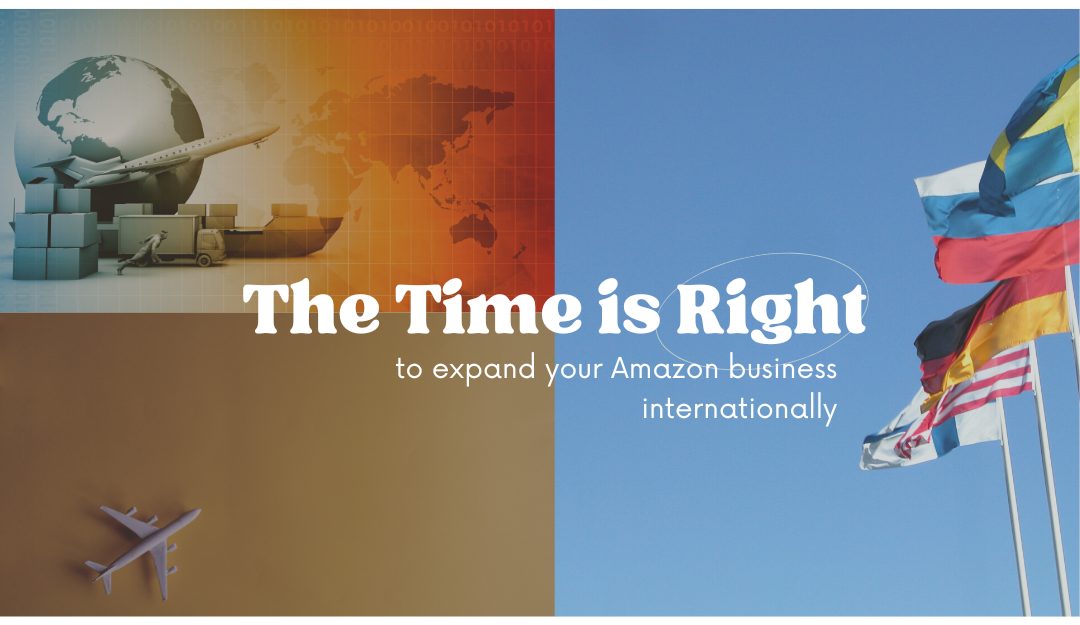Just recently, Jana had a value-filled conversation with Michael of the Amazing FBA podcast. So much of the talk centered around eCommerce post-epidemic. What did the Amazon world look like in the beginning of 2022 as the world tried to get back up on its feet after 2 years? What does it look like now? What will it look like in the next few months? The state of e-Commerce is important when considering international expansion for your Amazon business – a topic in which keywords for Amazon play a pivotal role.
Let’s see what the health of the e-Commerce world looks like now, and why the time is right to plan your international expansion.
Here’s where to listen to the whole podcast:
Amazon Keyword Research in International Marketplaces with Jana Krekic of YLT Translations
A Look at the Past, Present, and Possible Future of Amazon Business
“Q1 was tough on everyone,” Jana emphasizes. Sellers all over the world cut costs on PPC, and aggregators slowed down their brands acquisition. Q2 was not so great either, but in Q3 things started to pick up. Sellers saw the best Prime Day in recent history. Many Amazon sellers started to get back in the saddle as the shock of the first half of 2022 wore down. Sellers started getting their brands ready to exit in 2 years or so. But the attitude has changed; it’s more subdued and less prone to taking risks. The approach is smart and strategic, building things up how they needed to be done.
Nevertheless, Amazon sellers aren’t out of the woods just yet. Jana anticipates that the next 12 months will be difficult with the impending worldwide economic recession.
This state of affairs begged the question – will essential products perform better than non-essentials? And what counts as an essential product nowadays?
Some Good Advice to Future-Proof Your Business
Michael pointed out that, seeing as the future looks rather bleak, a wise tactic would be asset allocation. That is, international expansion. Divide and conquer, as it were; have something in as many countries as possible.
Now that the world seems hungry for something outside of e-Commerce, it’s dangerous and risky to predict with precision what the e-Commerce world will look like in the next year. Nevertheless, the current trend seems to lean towards traditional retail once more, almost as if people got tired of sheltering in place so much, they’re hungry for experiences. With this level of uncertainty, a wise tactic would be to spread one’s assets around instead of leaving all your eggs in the highly competitive Amazon US market.
Keywords for Amazon in International Marketplaces
“Keywords are essential in your content so people can find your content,” Jana explains. It’s quite clear – keywords track the customer journey, and anticipate what customers call a product. That’s why you can’t use Google Translate to transpose your keywords from one market to another. The best example of this is Amazon.com vs. Amazon.co.uk. Both speak English, but the keywords are different. “Diapers” in the USA are “nappies” in the UK. Separate localized keyword research is crucial to successful expansion. “Cultural differences account for different customer journeys,” Jana points out.
“People do Google Translate and they do well for 6 months,” Jana observes. Then they tank, and they don’t know why. “After an audit, we discover that the content doesn’t make sense.” Amazon treats you nicely for the honeymoon period, but if in that 6 month period, your click-through rate and conversion optimization rate do not perform well, you’ll feel it.
The Best Keyword Research Tool for Your Amazon Business
There are many tools out there. Each one has its own strengths and weaknesses.
- Helium 10: top for Search Value, but results are not always relevant
- Data Dive: highly converting tool, but limited keywords
- Amazon Suggestion Expander: crucial for ASINs with few competitors, and great for discovering keywords when starting abroad
- Keyword Planner: Google has all the data! Don’t ignore external traffic, it’s important for your listing
- SEMRush: fantastic tool for Shopify keywords
In the European marketplaces, YLT Translations has noticed that sellers prefer 7 to 10 short and sweet bullets as opposed to the long 5 bullets on Amazon.com.
In fact, Jana recommends putting your strongest 8 keywords in the first 1000 characters of your listing – title included – then using the remaining characters to put in broader and less relevant keywords. Also, split test as much as possible; make it a habit.
Keyword research on Google is just as important as keyword research on Amazon. It’s key to get out of the Amazon space. “Think outside the Amazon bubble,” Michael suggests. Amazon is just a shopping site, after all – Google covers a wider ground. Consider the customer journey. Do customers really look for your product only on Amazon? Probably not.
Consider your product as well Perhaps this last piece of advice should be at the very top. “If you don’t have a highly competitive product, you’ll need to use more than 1 keyword tool,” says Jana. In fact, many of the keyword tools out there are focused on the US market. If you plan to sell on a European marketplace, use more than 1 tool to generate your keyword research, so you cover as much ground as possible.
You can also listen to the podcast here:

